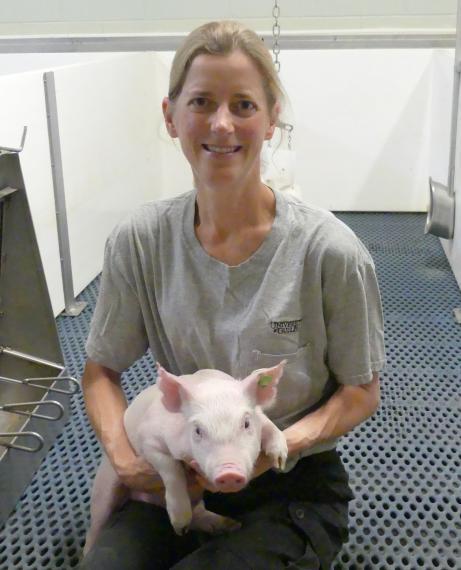Swine network promoting collaboration, awareness and innovation

As food production becomes more complex, research results – and the dissemination of results to end-users – becomes even more important. Aiding in the dissemination of swine research results is one role of the Ontario Swine Research Network (OSRN).
The network, which held its third annual Swine Research Day earlier this year, provides multiple platforms for the swine industry to collaborate and discuss current research results and initiatives. The OSRN also aims to increase awareness and understanding of recent swine research and highlights researchers conducting swine research at the University of Guelph.
“OSRN is important because it brings a variety of people involved in the swine industry together to enhance and improve research,” says University of Guelph Prof. Terri O’Sullivan, Department of Population Medicine, and OSRN Network Director.
The research-intensive Ontario pork industry benefits from the efforts of the OSRN to further the understanding of swine research. The pork industry has a significant economic impact; it contributes almost 13,000 full-time equivalent jobs to Ontario and $850-million a year in products.
To improve swine research translation and transfer across the industry, O’Sullivan, the other members of the organizing committee (Karen Richardson, research assistant, and Hannah Golightly and Enise Decaluwe-Tulk, student veterinarians) put together the program for the 2018 Swine Research Day. The annual event brings together students, researchers, producers and other industry members to hear presentations on current research and the Centralia Swine Research Update Legacy poster and oral presentation graduate student competitions for Masters and PhD students.
Speakers at Swine Research Day present their research in a way that is widely accessible. Attendees, from farmers to stakeholders, are encouraged to ask questions and participate in the discussion. Researchers make use of this networking event to learn about swine studies underway, to network, and develop collaborations with others in the field.
A collection of swine research results and the proceedings from the Swine Research Day can be found on OSRN’s website. To attract a variety of readers, the network provides an assortment of tools such as educational webinars, interviews with researchers, research updates and information about the annual Swine Research Day.
The organizing committee of OSRN has also developed a listserv for people interested in being notified on new swine research and OSRN activities. It has more than 160 registered participants. If you are interested in joining the listserv visit the OSRN website.
The multiple platforms provided by OSRN focus on highlighting new research at the University of Guelph and the collaborative work that takes place with other institutions. These platforms help to raise awareness of the provincial, national and international impact of the University of Guelph’s swine research program.
The continued activities of the OSRN will further knowledge translation on current research advancements and promote members of the swine industry to engage in discussions, form connections and encourage collaborations.
Next for O’Sullivan is to develop short research update pages that will provide brief and easy to understand information on current or recently completed studies.
Funding for the OSRN was provided by an Ontario Ministry of Agriculture, Food and Rural Affairs - Knowledge, Translation and Transfer grant. Swine Research Day was sponsored by industry supporters.
The OSRN website can be found at: https://www.uoguelph.ca/osrn/